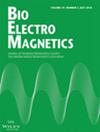下载PDF
{"title":"感应滚刀的暴露评估方法和程序的评价","authors":"Jingtian Xi, Sven Kühn, Cosimo Fortunato, Erdem Ofli, Niels Kuster","doi":"10.1002/bem.70024","DOIUrl":null,"url":null,"abstract":"<p>Induction hobs generate strong alternating magnetic fields to heat pots by inducing eddy currents. These fields are the strongest close to the bottom of the cookware, but stray fields at large distances can still be substantial. In general, these are higher than the reference levels defined by international electromagnetic exposure safety guidelines (ICNIRP 1998; ICNIRP 2010; IEEE 2019). That the reference levels are exceeded does not imply that the basic restrictions are also violated. In this study, we assess the exposures caused by the latest generation of induction hobs by applying the advanced instrumentation and different methods that include the procedures developed by the International Electrotechnical Commission (IEC) for household appliances (IEC 62233) (IEC International Electrotechnical Commission 2005), the 4-tier approach developed for inductive wireless power transfer systems (IEC 63184) (IEC International Electrotechnical Commission 2021), and their derivatives. First, methods for determining the maximum exposure configuration were assessed. Then, the 3D distribution of the incident magnetic field was sampled with a scanning system and analyzed, and the contact currents assessed. Lastly, numerical dosimetric evaluations were performed in anatomical models to determine the maximum fields induced by the measured incident fields directly or by a representative coil model converted from the measured fields. The study's findings reveal significant variations in exposure across different induction hobs, with differences of up to a factor of <span></span><math>\n <semantics>\n <mrow>\n <mo>></mo>\n </mrow>\n <annotation> $\\gt $</annotation>\n </semantics></math> 20 (<span></span><math>\n <semantics>\n <mrow>\n <mo>></mo>\n </mrow>\n <annotation> $\\gt $</annotation>\n </semantics></math> 26 dB) as a function of power, coil size, and proximity to the coil. This suggests that low-exposure hobs can be designed without compromising cooking performance. Furthermore, the study strengthens the conclusions of previous studies that IEC 62233 (IEC International Electrotechnical Commission 2005) may underestimate the exposure for persons standing next to the hob by up to a factor of <span></span><math>\n <semantics>\n <mrow>\n <mo>></mo>\n </mrow>\n <annotation> $\\gt $</annotation>\n </semantics></math> 30—based on testing according to the exposure limits from (ICNIRP 1998; IEEE 2019)—and thus does not ensure safety. A dosimetric analysis, the most accurate method, would be relatively costly. Alternative approaches derived from (IEC International Electrotechnical Commission, 2021) that are affordable and not overly conservative are discussed. Bioelectromagnetics. 00:00–00, 2025. © 2025 Bioelectromagnetics Society.</p>","PeriodicalId":8956,"journal":{"name":"Bioelectromagnetics","volume":"46 7","pages":""},"PeriodicalIF":1.2000,"publicationDate":"2025-09-29","publicationTypes":"Journal Article","fieldsOfStudy":null,"isOpenAccess":false,"openAccessPdf":"https://onlinelibrary.wiley.com/doi/epdf/10.1002/bem.70024","citationCount":"0","resultStr":"{\"title\":\"Evaluation of Exposure Assessment Methods and Procedures for Induction Hobs\",\"authors\":\"Jingtian Xi, Sven Kühn, Cosimo Fortunato, Erdem Ofli, Niels Kuster\",\"doi\":\"10.1002/bem.70024\",\"DOIUrl\":null,\"url\":null,\"abstract\":\"<p>Induction hobs generate strong alternating magnetic fields to heat pots by inducing eddy currents. These fields are the strongest close to the bottom of the cookware, but stray fields at large distances can still be substantial. In general, these are higher than the reference levels defined by international electromagnetic exposure safety guidelines (ICNIRP 1998; ICNIRP 2010; IEEE 2019). That the reference levels are exceeded does not imply that the basic restrictions are also violated. In this study, we assess the exposures caused by the latest generation of induction hobs by applying the advanced instrumentation and different methods that include the procedures developed by the International Electrotechnical Commission (IEC) for household appliances (IEC 62233) (IEC International Electrotechnical Commission 2005), the 4-tier approach developed for inductive wireless power transfer systems (IEC 63184) (IEC International Electrotechnical Commission 2021), and their derivatives. First, methods for determining the maximum exposure configuration were assessed. Then, the 3D distribution of the incident magnetic field was sampled with a scanning system and analyzed, and the contact currents assessed. Lastly, numerical dosimetric evaluations were performed in anatomical models to determine the maximum fields induced by the measured incident fields directly or by a representative coil model converted from the measured fields. The study's findings reveal significant variations in exposure across different induction hobs, with differences of up to a factor of <span></span><math>\\n <semantics>\\n <mrow>\\n <mo>></mo>\\n </mrow>\\n <annotation> $\\\\gt $</annotation>\\n </semantics></math> 20 (<span></span><math>\\n <semantics>\\n <mrow>\\n <mo>></mo>\\n </mrow>\\n <annotation> $\\\\gt $</annotation>\\n </semantics></math> 26 dB) as a function of power, coil size, and proximity to the coil. This suggests that low-exposure hobs can be designed without compromising cooking performance. Furthermore, the study strengthens the conclusions of previous studies that IEC 62233 (IEC International Electrotechnical Commission 2005) may underestimate the exposure for persons standing next to the hob by up to a factor of <span></span><math>\\n <semantics>\\n <mrow>\\n <mo>></mo>\\n </mrow>\\n <annotation> $\\\\gt $</annotation>\\n </semantics></math> 30—based on testing according to the exposure limits from (ICNIRP 1998; IEEE 2019)—and thus does not ensure safety. A dosimetric analysis, the most accurate method, would be relatively costly. Alternative approaches derived from (IEC International Electrotechnical Commission, 2021) that are affordable and not overly conservative are discussed. Bioelectromagnetics. 00:00–00, 2025. © 2025 Bioelectromagnetics Society.</p>\",\"PeriodicalId\":8956,\"journal\":{\"name\":\"Bioelectromagnetics\",\"volume\":\"46 7\",\"pages\":\"\"},\"PeriodicalIF\":1.2000,\"publicationDate\":\"2025-09-29\",\"publicationTypes\":\"Journal Article\",\"fieldsOfStudy\":null,\"isOpenAccess\":false,\"openAccessPdf\":\"https://onlinelibrary.wiley.com/doi/epdf/10.1002/bem.70024\",\"citationCount\":\"0\",\"resultStr\":null,\"platform\":\"Semanticscholar\",\"paperid\":null,\"PeriodicalName\":\"Bioelectromagnetics\",\"FirstCategoryId\":\"99\",\"ListUrlMain\":\"https://onlinelibrary.wiley.com/doi/10.1002/bem.70024\",\"RegionNum\":3,\"RegionCategory\":\"生物学\",\"ArticlePicture\":[],\"TitleCN\":null,\"AbstractTextCN\":null,\"PMCID\":null,\"EPubDate\":\"\",\"PubModel\":\"\",\"JCR\":\"Q3\",\"JCRName\":\"BIOLOGY\",\"Score\":null,\"Total\":0}","platform":"Semanticscholar","paperid":null,"PeriodicalName":"Bioelectromagnetics","FirstCategoryId":"99","ListUrlMain":"https://onlinelibrary.wiley.com/doi/10.1002/bem.70024","RegionNum":3,"RegionCategory":"生物学","ArticlePicture":[],"TitleCN":null,"AbstractTextCN":null,"PMCID":null,"EPubDate":"","PubModel":"","JCR":"Q3","JCRName":"BIOLOGY","Score":null,"Total":0}
引用次数: 0
引用
批量引用


 求助内容:
求助内容: 应助结果提醒方式:
应助结果提醒方式:


